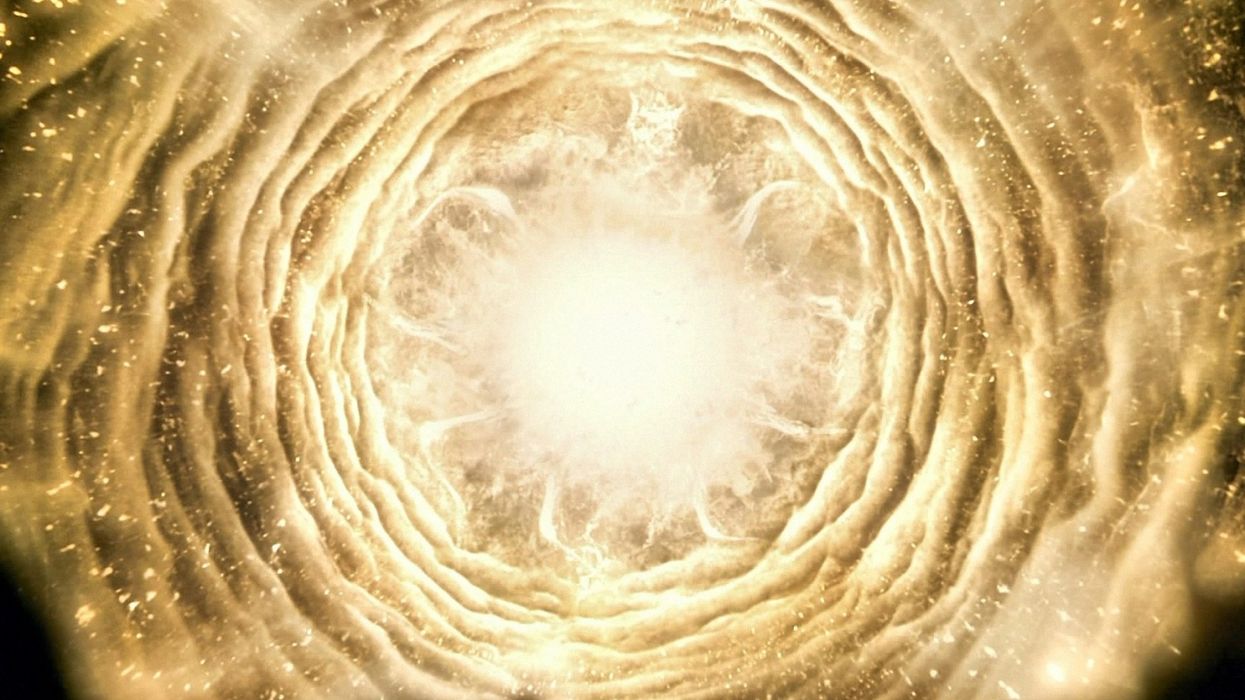From Microscopic to Cosmic: The Fittingly Organic VFX of 'The Fountain' & 'The Tree of Life'

Other than their deep meditation on mortality -- and the associated motif of a sacred source of life -- Darren Aronofsky's The Fountain (2006) and Terrence Malick's The Tree of Life (2011) couldn't be more different. That is, aside from the way in which the films achieve much of their strikingly beautiful cosmic imagery. In an era of filmmaking in which CGI and space-bound science fiction are far from strangers, these two films opt for a more naturalistic alternative -- such as macrophotography and high-speed microscopy -- to visualize their explorations of life in the universe. What could be more appropriate effects for films so occupied with the organic? Click through for some details on how VFX allowed the microscopic to 'double' for the cosmos.
The Fountain
Below is some material from a behind-the-scenes mini-doc on The Fountain -- set to begin playing wherein VFX designers Jeremy Dawson and Dan Schrecker go into detail about the effects specifically -- followed by further exemplification of the results (between the quotes below):
Aronofsky cites 2001: A Space Odyssey as a key influence in his desire to avoid CGI, because that film's FX powerfully illustrate how well real photography of real objects can hold up, even viewing the film decades later. An article from Wired goes into even greater detail about the work of macrophotographer/marine biologist Peter Parks, who masterminded and filmed the chemical and biological elements key to the effects:
Parks and his son run a home f/x shop based on a device they call the microzoom optical bench. Bristling with digital and film cameras, lenses, and Victorian prisms, their contraption can magnify a microliter of water up to 500,000 times or fill an Imax screen with the period at the end of this sentence. Into water they sprinkle yeast, dyes, solvents, and baby oil, along with other ingredients they decline to divulge... The upshot is that Parks can make a dash of curry powder cascading toward the lens look like an onslaught of flaming meteorites. "When these images are projected on a big screen, you feel like you're looking at infinity," he says. "That's because the same forces at work in the water – gravitational effects, settlement, refractive indices – are happening in outer space."
"The studio gave Darren a really hard time," Parks recalls. "Nobody believed he could make this film without CGI. The studio thought he was crazy." With a stack of Hubble photographs for inspiration, [Parks and his son] worked from before dawn till late at night for 10 weeks. The cost of a single f/x sequence from ILM can reach several million dollars, but Parks shot all the footage Aronofsky needed for just $140,000.
And thusly, through creative problem solving and 'good old fashioned' photography, Aronofsky was able to largely avoid the use of CG except in compositing these elements together. There's much more fascinating material to be read on The Fountain and its visual effects, but unfortunately far too much to be included here. You can read plenty more where that came from in the links below.
The Tree of Life
Come to think of it, there's yet another connection between these two films, and that's the 2001: A Space Odyssey one. For Terrence Malick's The Tree of Life, SFX legend Doug Trumbull returned from a three-decade 'hiatus' from feature work -- which includes 2001. From Animation World Network:
Filmmaking guru Doug Trumbull consulted as a favor to Malick... he set up a lab called "the skunkworks" in a small studio to photograph practical elements for the Astrophysical realm. "I think it's an extraordinary thing and it comes at a time when the world really needs something that's outside the box," Trumbull proclaims. "We were shooting with a combination of the Phantom Gold 2K camera at up to 1,000 fps and sometimes with a Red One camera using it at 4K, sometimes at 24 fps and sometimes even under cranked at 6 or 12 fps," Trumbull continues.
"There were a lot of experiments in water tanks, different kinds of turbulence tanks that I would design; lighting effects in tanks; combinations of dyes and liquids, paint and a lot of milk and half and half. It's the way I like to work. When we first spoke, Terry was frustrated that even some of the best super computers in the world that were doing galaxy and Black Hole simulations tended to look a little synthetic." [From Vanity Fair:] "[Malick] said to me, 'I don't like CG.' I said, 'Why not do it the old way? The way we did it in 2001?'"
All this and we haven't even gotten to the part about the dinosaurs! In all seriousness, though -- it's inspiring to know such imagery can be accomplished with a concrete basis in photography, and that there are creative minds in filmmaking still interested in pursuing it. Once again, there's loads of material here regarding both Fountain and Tree of Life -- both of which detail the makers of each pulling off miracles of altogether different kinds to get them made as well.
What do you guys think of these effects? Do they outperform digital imagery at the task -- and can they hold up better than contemporary CG animation? What other examples of non-traditional (or traditional, I guess, depending on your perspective) visual effects have stuck with you?
Links for The Fountain:
- Talking with the Makers of The Fountain -- Comic Book Resources
- The Outsider -- Wired
- The Fountain: VFX in a Petri Dish -- Animation World Network
- Look Effects Does More With Less CG on The Fountain -- Animation World Network
- The Fountain Commentary -- Vimeo
Links for The Tree of Life:














